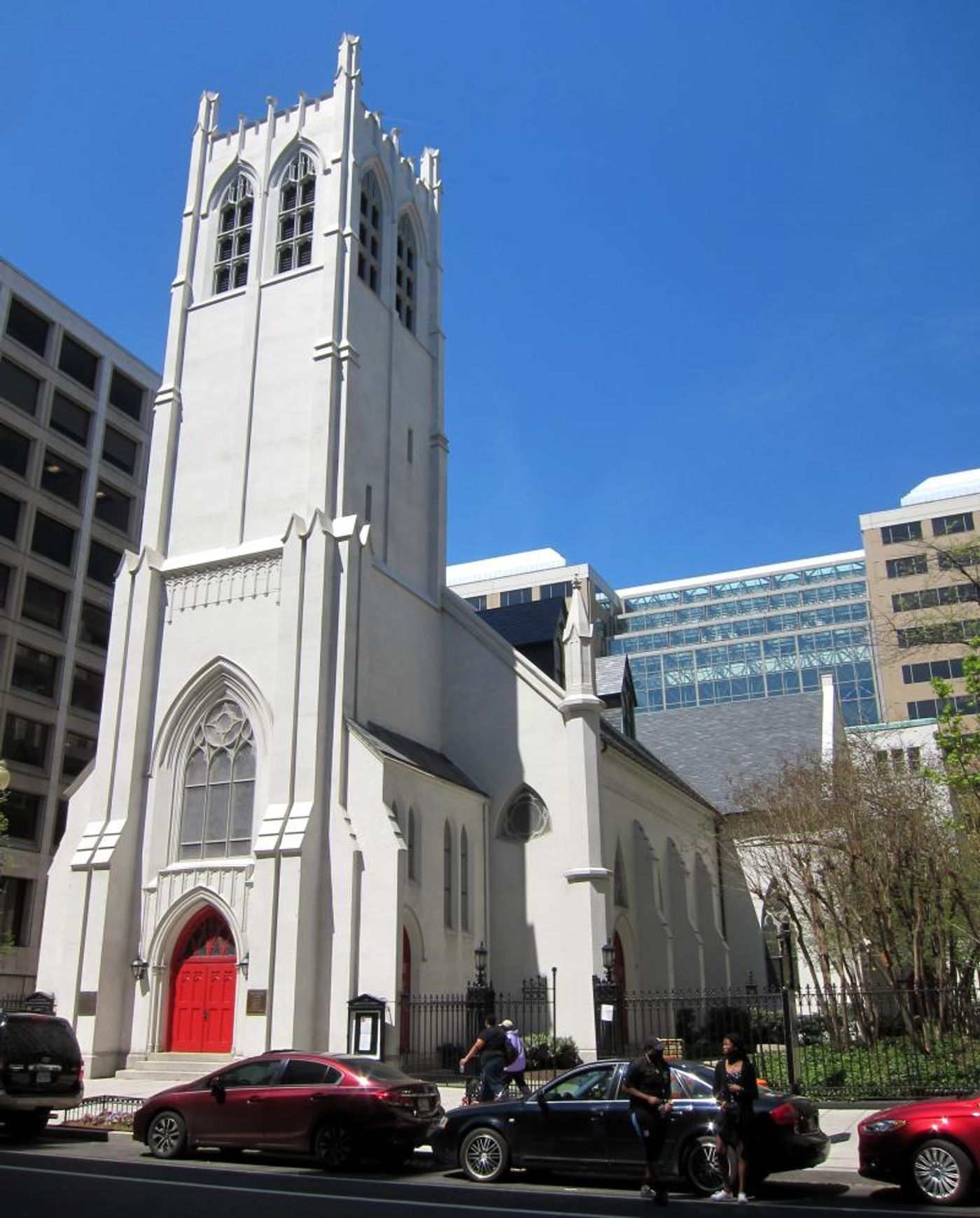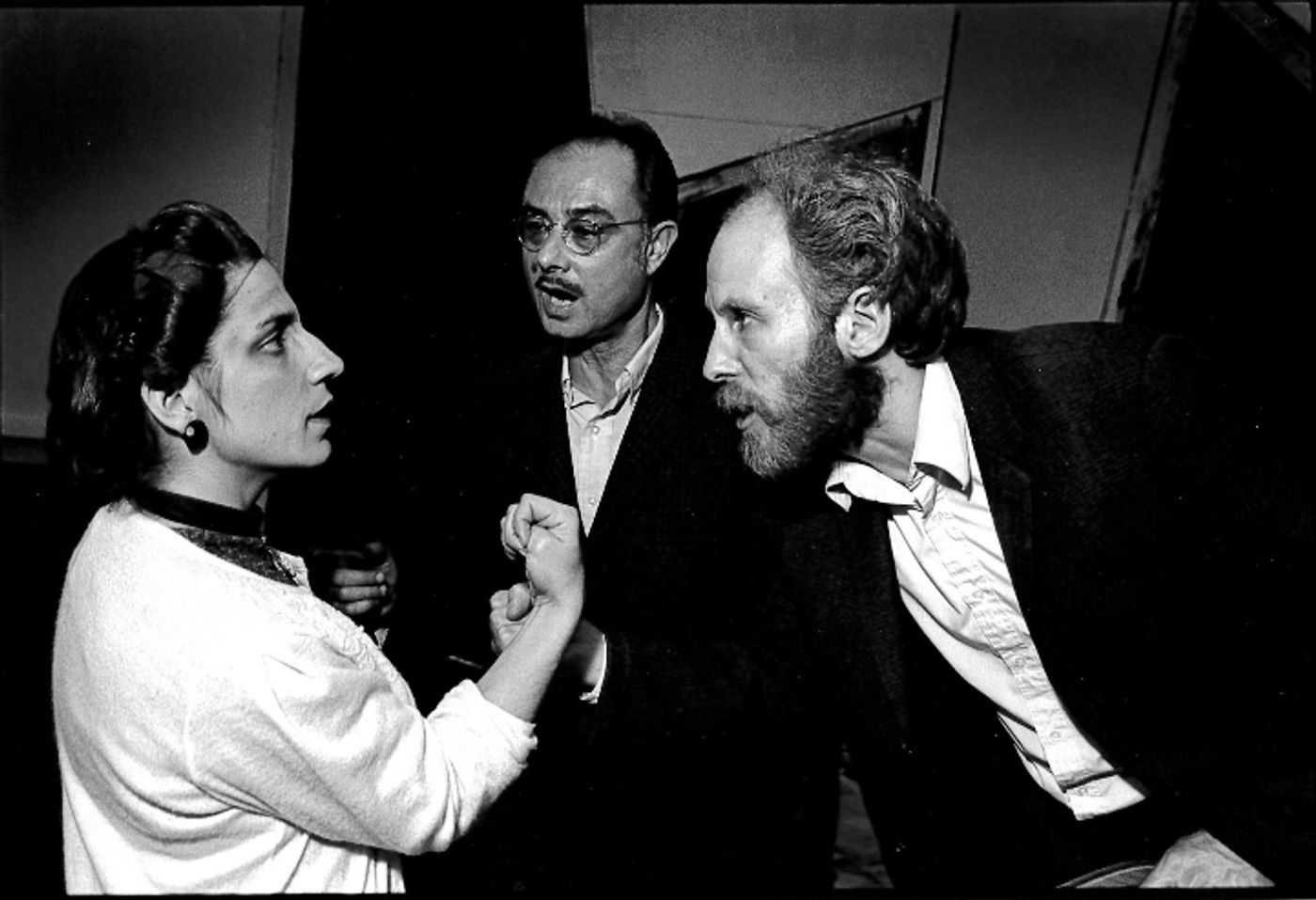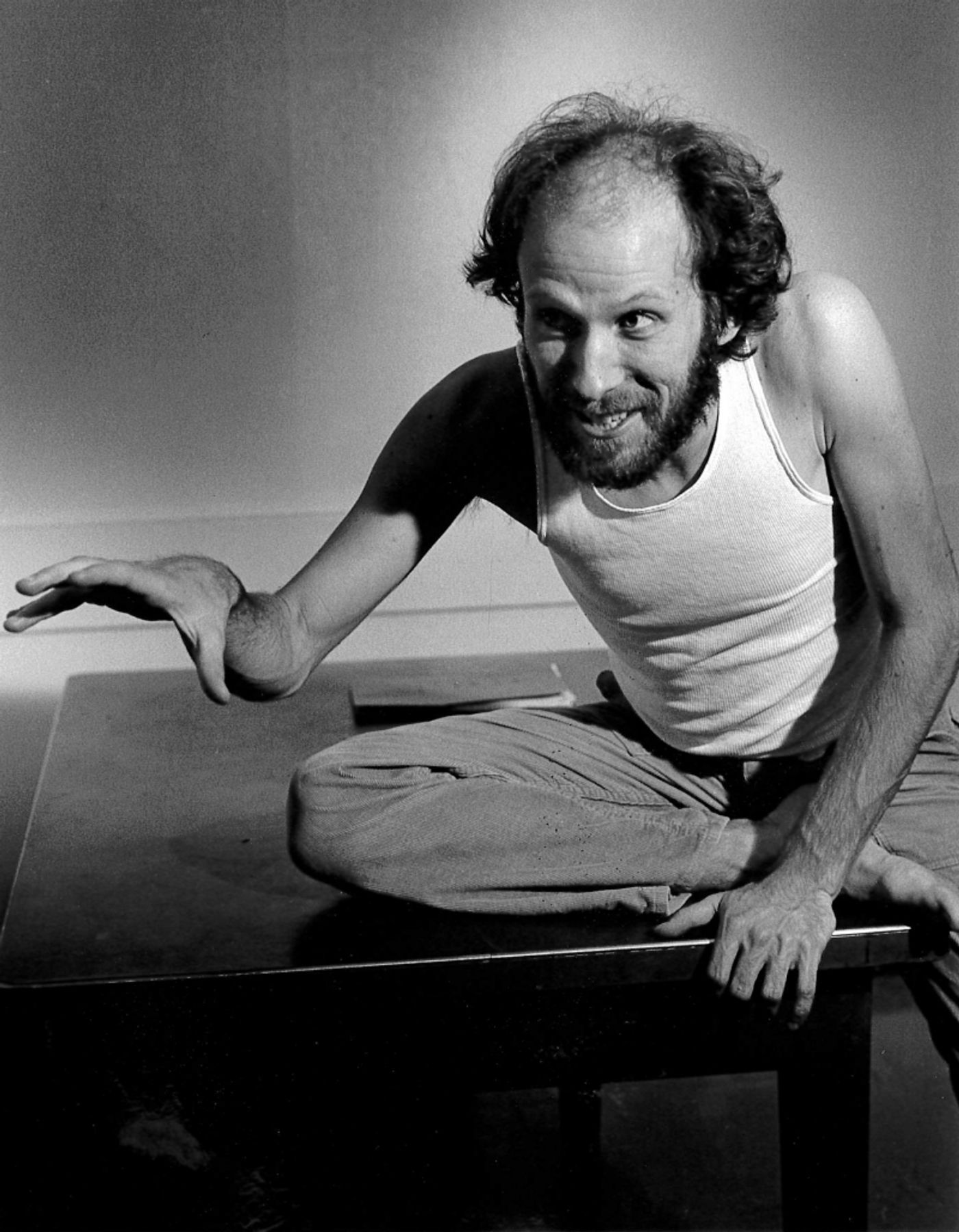Interview: A Special Two Part Theatre Life with Howard Shalwitz. Part One: The Early Years

Today's subject was kind enough to give me an hour of his time in the balcony of the place he lived his theatre life for almost 40 years.
I'm sure there isn't a person here in DC who would argue that Howard Shalwitz was one of the most influential minds in the DC theatre community as the Artistic Director of Woolly Mammoth Theatre Company. Under Shalwitz, Woolly Mammoth produced some of the most thought provoking, wild, and sometimes shocking pieces of theatre this area has ever seen. Shalwitz stepped down in 2018 and the company is now run by Maria Manuela Goyanes. Mr. Shalwitz remains as Artistic Director Emeritus.
Here we have a man who was never afraid of taking a risk when it came to producing a Woolly Mammoth season. His choices ranged from presenting monologist extrodinaire Mike Daisey to works by such playwrights as Robert O' Hara, Danai Gurira and many many more.
Mr. Shalwitz can also be credited for giving actress Kimberly Gilbert her first professional DC theatre credit. Over the years other local performing luminaries such as Rick Foucheux, Naomi Jacobson, Jon Hudson Odum, and Jennifer Mendenhall among others have all graced the stage of Woolly Mammoth Theatre Company.
Woolly Mammoth gave us the World Premieres of Aaron Posner's Stupid f-ing Bird and the Pulitzer Prize winning Clybourne Park by Bruce Norris. Both shows were directed by Howard Shalwitz. Both plays are now performed all over the country.
You also might remember Howard's onstage performances in The Arsonists or Full Circle or going back to the early days of the company The Empire Builders. There are of course too many to list them all.
This was truly a mammoth (couldn't resist) interview to put together so for the first time ever in Theatre Life's history I am presenting a two part interview. It is the only way to encompass all I wanted to feature with Howard Shalwitz because if the subject isn't represented correctly then why bother doing an interview at all?
This installment covers Howard's humble beginnings in Buffalo, NY, Woolly Mammoth's early days and a question I've been wanting to ask for a long time of this DC theatre visionary.
Growing up in Buffalo, New York, did you have any idea you would get into theater?
I actually was in active theater goer from a very young age. A little known fact is that Buffalo is a great place for theatre, not the city itself, but it's only two and a half hours from Stratford, Ontario. So starting from when I was about ten or eleven years old,my family would go up every summer and see a few Shakespeare plays at Stratford and the Shaw Festival at Niagara on the Lake and then Studio Arena Theater, which is gone now. But it was a flagship one of those flagship regional theaters. And I actually got my equity card there. And I've directed there. But so I you know, I didn't go to grad school for theater or to even undergrad for theater. So I always feel that my theater going was my real theater education. And I did a lot of it.
I didn't take theater seriously as a profession for myself until after I did my undergraduate degree at Wesleyan in Philosophy and my graduate degree at Brown, teaching secondary social studies, history and stuff. And then I decided to take a year off and do some theater. And that year was in Buffalo. So Buffalo is in fact where I got my start. I worked with a whole bunch of small theater companies in Buffalo and then at Studio Arena, which was the major regional theater there. And then people were encouraging to me and they said, "Oh, why don't you go to New York?" So now I had all these new friends in New York because most of the cast members from a production of A Little Night Music were in there. So I just ran off to New York to live with my grandmother for a couple of months. And I and very shortly after that, as an intern at New Jersey Shakespeare Festival, I met Roger Brady, who eventually I I found it really worth it several years later.
So the answer is no. It was the last thing on my mind. It was just like a fun thing to do for me. Until eventually I decided to take it seriously.
What was your first professional job as a performer?
I worked for a dinner theater company called Tabletop Productions as both an associate producer and as an actor. I worked at Buffalo Arena Theater in a production of A Little Night Music and there were a couple of other smaller companies where I probably got paid, But I had a busy year in Buffalo working for several companies and that was definitely my first professional gig.
When you co-founded Woolly Mammoth Theater Company, you were an actor in New York City. What was it about DC that made you and your co-founders think this was the perfect city to become the company's home?
We were kids in our mid twenties and incredibly studious about that question. And we actually we I mean, shortly after we wrote a manifesto in August of 1978 for the new theater, I don't share that document very readily. It's pretty embarrassing. But and we use that as the foundation for a lot of visits that we made to several cities. And Washington was one of them. But we went to smaller cities like Niagara Falls, which was outside of Buffalo.
So we were thinking maybe a smaller town that didn't really have a major theater or a big town where we would have a particular niche in relation to an existing larger theater community. So it came down finally to Chicago versus DC. But we had considered Albany along the way, and Roger's hometown of Tacoma, Washington.We met with people in each of those cities and tried to assess the circumstances, the funding possibilities, all that stuff. So we were very studious about it.
I think that Washington DC just checked a lot of boxes in terms of having an infrastructure and a theater community and some funding sources. At that time, this is in the late 70s, its reputation was maybe not that great, but the Kennedy Center had just opened, and Arena Stage, of course, was going strong. I think it was just that it was like the reputation was always a conservative kind of button down town. And we were attracted by the fact it was the nation's capital. We were interested in doing very political work. But I don't think that any of the warning signs about DC being a conservative town turned out to be true at all. It just turned out to be.
I've often said in hindsight that I don't think Woolly Mammoth could have gotten as far or as fast in any other American city other than Washington DC. I think that from the moment we got started here and our work wasn't very good in the early years, but I still thought there was an audience that really wanted to see new and different and, weird stuff. So it never seemed like a buttoned down city to me. And the thing is, the people we attracted were the open minded part of the city.

What do you remember the most about Woolly Mammoth's very first opening night.
We had done a few plays in NY under Woolly Mammoth but our first opening in DC was at the Church of the Epiphany where we were for our first five or six seasons. We just traipsing the streets to find a place to perform and they let us perform there in the parish hall.
The show was a double bill of a Mark Medoff one act play called the Froegle Dictum. It was sort of a post-Vietnam kind of comedy with polite political overtones and a sort of absurdist vein. Medoff became an important writer for us. It was on a double bill with an improvised play that grew out of a lot of improv workshops that we had done called Fits and Starts, which I kind of created with a couple of other actors, and that was a disaster. I mean, it was just really bad. There was a gun onstage and it was something about a murder. There was a basic scenario, but somehow we were improvising the details of it. Every night it was mercifully short running just a half hour. I was in it and I'd helped to create it and I remember after one particular review just how painful it was to go on stage every night with the certainty that this thing was a disaster. But we believed in it.

L-R Georgia Lee Duncan, Ade Spikol and Howard Shalwitz.
Photo courtesy of the company.
How many productions did it take before you really knew Woolly Mammoth was going to be an important part of the DC theater community.
I never thought it was going to be. You don't even think about that. Your just so focused on the next show, keeping it going, and raising the money. They early years were fun, but they were such hard work. There was just a staff of you the three of us who got it going. There was myself and Roger and Linda Reinisch. Roger left maybe two or three seasons in and then it was just Linda and I. And maybe then we added a staff member or two. Really though, it's just a few people really try to push this boulder up the hill and you're just working so hard and you're just trying to keep it going.
It was the end of our time at the Church of the Epiphany. We had a complicated schedule at the church, We couldn't do our normal season because of church scheduling and we crunched the whole season into a summer rep of three plays and three out of the three plays were all smash hits. They were Christmas on Mars by Harry Condole, New York Mets by T.J. Edwards, who was a local writer and a member of our company and a play I directed about terrorism called And Things That Go Bump in the Night. So it was a world premiere play by a local writer. And then it was two very quirky, provocative American plays with a group of actors most of whom were in at least two out of the three shows. You were really showcasing a repertory idea, the idea of a company in a fresh way, and then a lot of stylistic territory being covered in one little rep of three plays. All three of them were like smash hits that propelled us past the church.
I think we felt that was this signature moment. That was a platform for our move to Church Street, which lasted ultimately 13 years.

When you were choosing your seasons for this company, what was your criteria? Did the pieces have to have certain quirks or some shock value? Or were there just things about each of the scripts in general that spoke to you as an Artistic Director?
I would never say shock value, but I do think about challenging audiences and challenging myself.
So in other words what if I would read a play and I would go, "Oh, I can see this. I know how this will go." it just didn't interest me. So I'm not saying I didn't want to do plays that people would like and respond to. I did. But I wanted to be on that critical edge where they're going, "Oh, this is something new I haven't seen before."
I'd also say that it was trying to find a meeting point of sort of two important sweet spots. One is that there was provocation from a content point of view. There was some statement about American life or morality or culture or politics that I that I thought was timely and worth making. And at the same time, there was either a formal inventiveness or a kind of freshness to the language, a kind of energy in the language.
We were never realism based. That's not saying we haven't done a lot of of realism over the years. But realism was never our center. And so I was looking for that sweet spot where those two things content and let's say style slash form meet in a fresh way that we were always after.
I have very little patience for plays that are laying in a background situation over the first ten or twenty pages, just helping you get to know the characters and sort of living with them inside. I feel like a play has to kind of have a jump factor right from the beginning. And so that's just another factor I didn't have. I read a lot of plays and I didn't have patience for plays that didn't get to it pretty quickly.
You come off as a very quiet and mild mannered person. Yet some of the shows you produced are some of the most off the wall and shocking pieces of theatre I've ever seen. Is there an alter ego to the quiet side of Howard Shalwitz?
LOL. Most people who know me would not say I come off as a quiet guy.
When I talk in public, I try to be calm and prepared.
I have a hot motor in the rehearsal hall, for example, or as an actor. I'm extremely high energy.
I can get animated very, very quickly around the topics that I believe in. So I reject that characterization. I think it's just something that people who don't know me that well perceive me as.
I try to be clear and rational in my in my presentation of stuff. I was involved in lots of efforts to kind of draw this community together.
I sort of always believed that it was a sort of responsibility and I sort of would approach that in a reasonably calm and rational way. So I don't know, I'm not a naturally super social person.
You do a lot of fundraising, obviously, and a lot of marketing when you're an artistic director. I've always believed that finding the right words and the right language to describe what you're trying to do and why you believe in it and why people should support it. That was worth a lot of time and energy and effort. I think words matter.
Everything about this interview was mammoth so special thanks have to go to Woolly Mammoth Theatre Company's Marketing and Communications Manager Naomi Longshore for her assistance in coordinating this interview and to the company's Director of Marketing Timmy Metzner for providing vintage photo support.
Theatre Life logo designed by Kevin Laughon.
Videos


.gif)